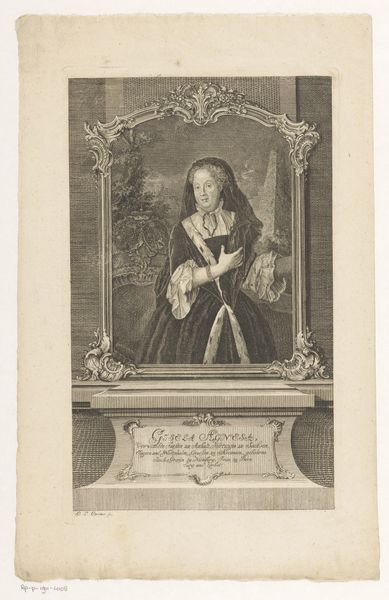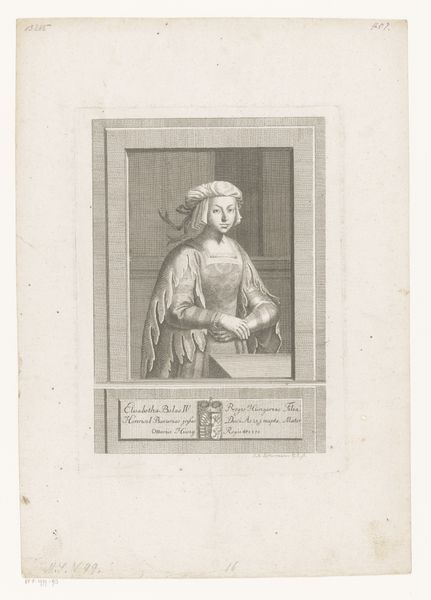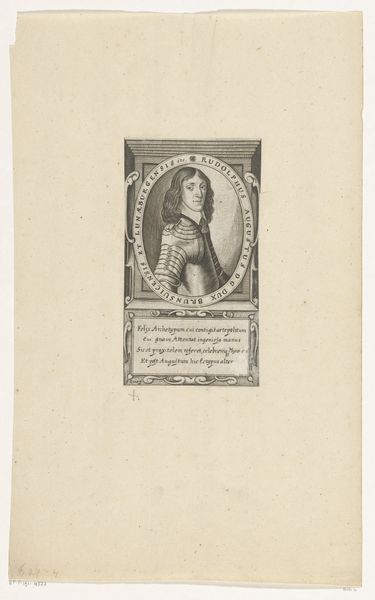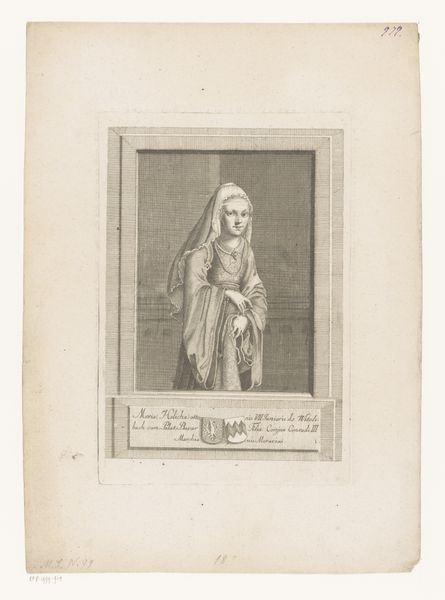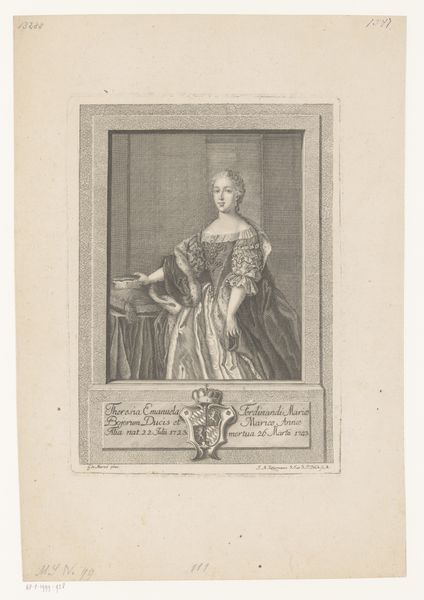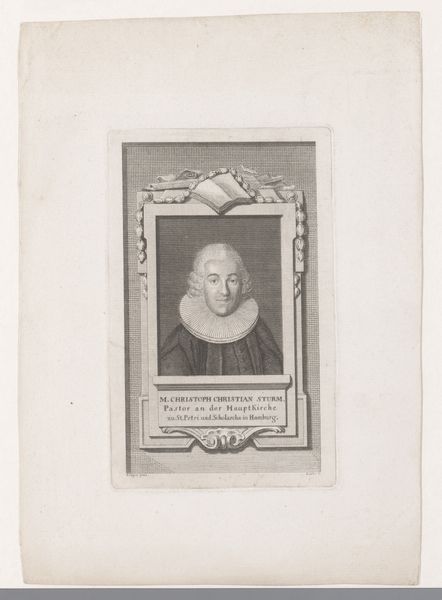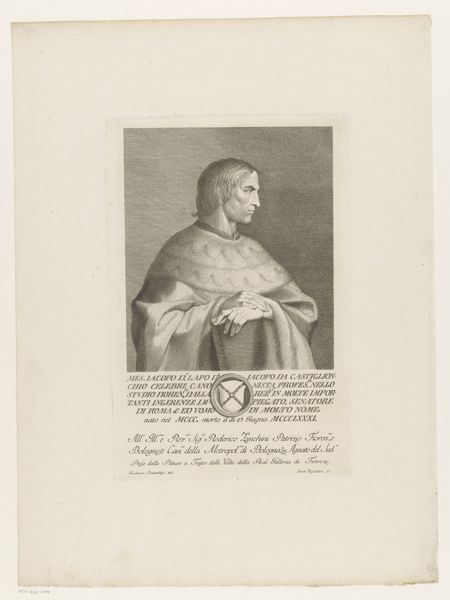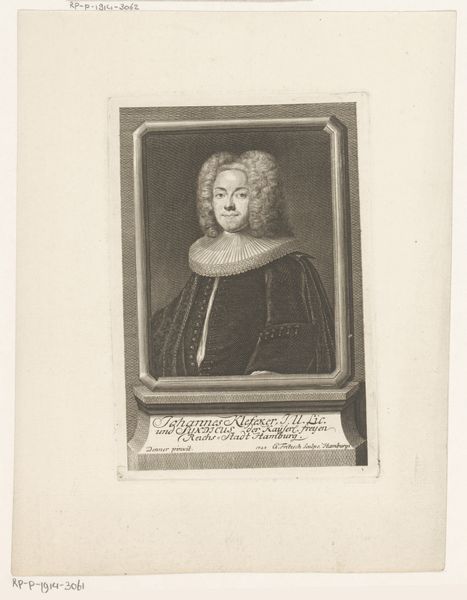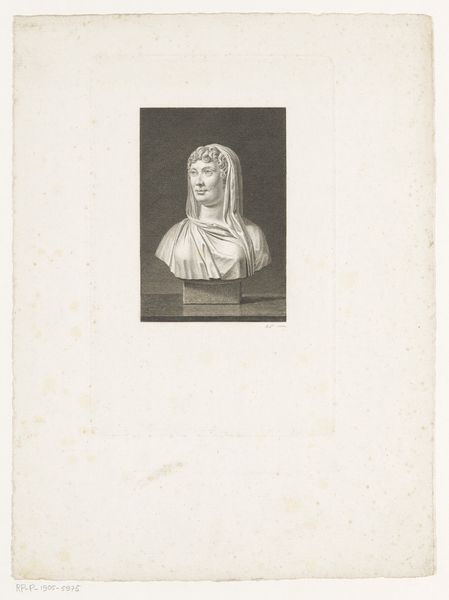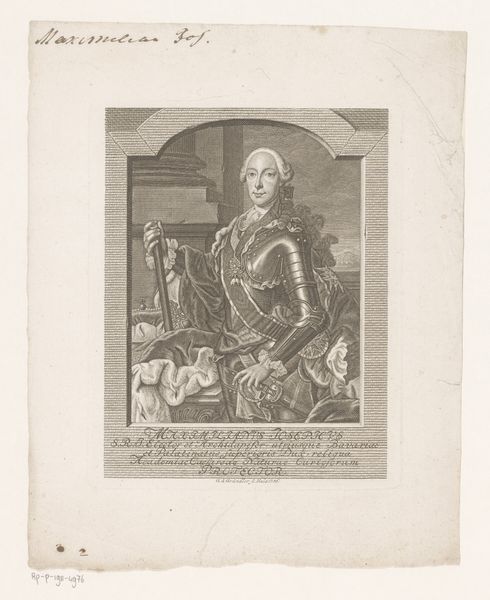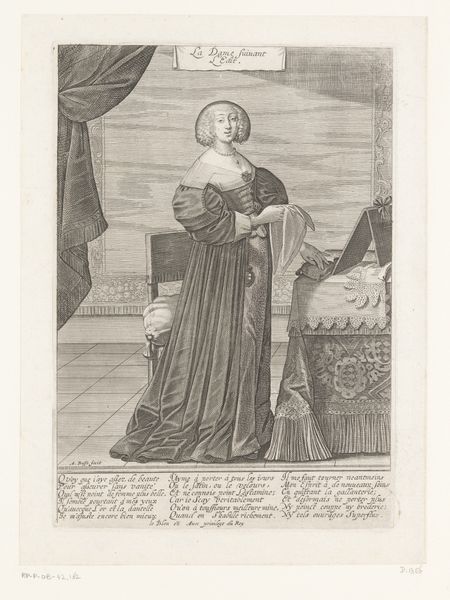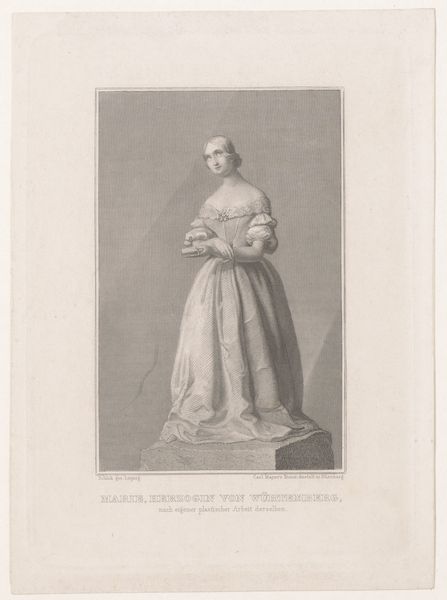
Dimensions: height 285 mm, width 184 mm
Copyright: Rijks Museum: Open Domain
Curator: At first glance, this engraving feels strangely muted for a baroque portrait. The details, despite being finely rendered, lack a certain vibrance. Editor: The lack of vibrancy could be a statement in itself. After all, we are looking at Joseph Anton Zimmermann's 1773 "Portret van Margaretha II van Henegouwen," depicting Margaret II, Countess of Hainaut. How does he depict her as a political figure in that moment? The portrait appears to reference or possibly even be inspired by earlier examples? What might Zimmermann want us to think about historical inheritance? Curator: Absolutely. The symbolic weight she carries is evident in the carefully rendered details of her dress and crown, hinting at a deep connection to tradition and power. She holds what appears to be the tip of a glove; consider the implications there. The empty glove represents her realm and her control thereof. Editor: The image, despite being a print, speaks to broader intersectional narratives about female leadership in patriarchal societies. Is Zimmermann, through this work, critiquing or celebrating Margaret's place in history? It's almost like her imprisonment mirrors the restrictive roles imposed on women, particularly powerful ones, of the era. I see here also the power dynamics at play through a careful depiction of social hierarchy. Curator: That's a fascinating angle. It could also be seen as a romanticized view of power and history; those family crests really jump out, anchoring her legacy to the piece and, further, cementing her historical identity. Her pale face stands in contrast with a darkened, undefined background, making her pop, just slightly. Editor: This contrast really emphasizes the loneliness and burden of leadership she carried, something the artist may want to evoke. Her position in what almost appears to be a box amplifies this, it is so reminiscent of gilded bird cages, and seems an unusual place for a Countess to reside in a stately painting. The question remains: are we meant to admire her strength or pity her isolation? Curator: The careful rendering of this engraving allows for myriad interpretations and further consideration of how rulers wish to be viewed, or preserved, by later generations. Editor: Agreed. The way Zimmermann handles the traditional portrait format is incredibly nuanced and prompts deep contemplation on historical identity and contemporary societal issues regarding governance and representation. It really moves me to reexamine preconceived notions around baroque portraiture and political history.
Comments
No comments
Be the first to comment and join the conversation on the ultimate creative platform.
